https://www.dropbox.com/scl/fi/1nif2uzwu77900p7ft1g8/ElevenLabs_2024-01-05T23_59_02_Adam_pre_s50_sb75_t2-7.mp3?rlkey=ngr6az1wbanac83qoy5any2dd&d
Presentazione slides itinerario
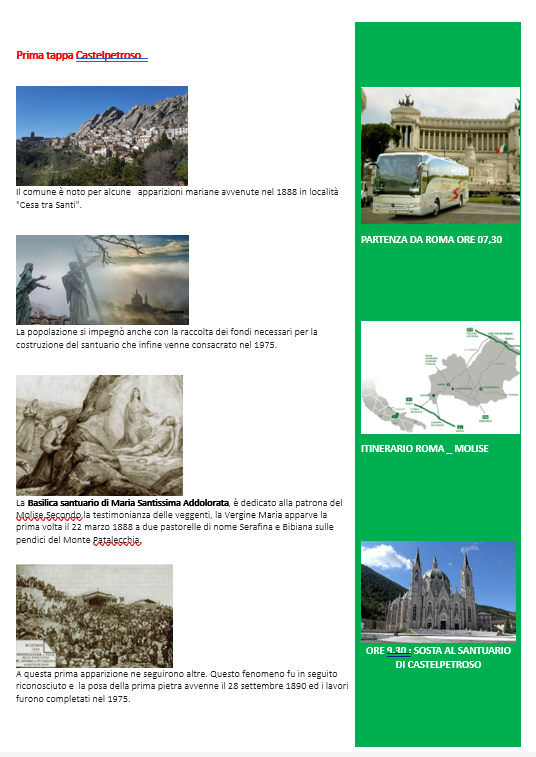
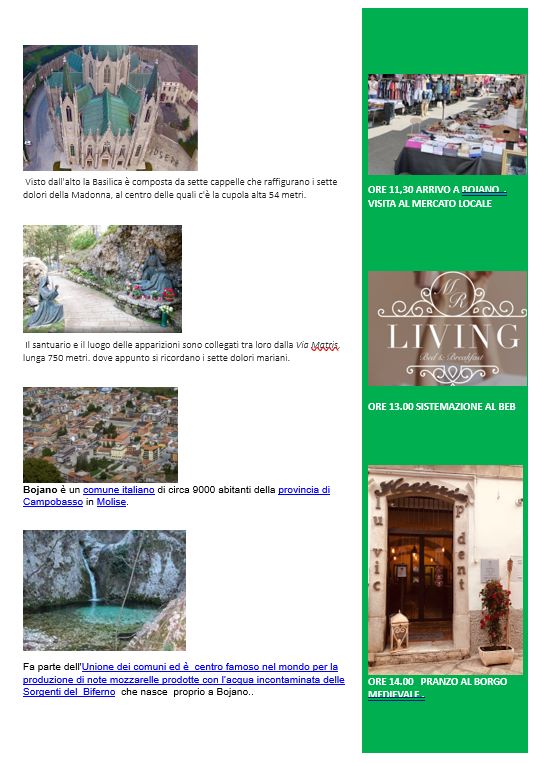
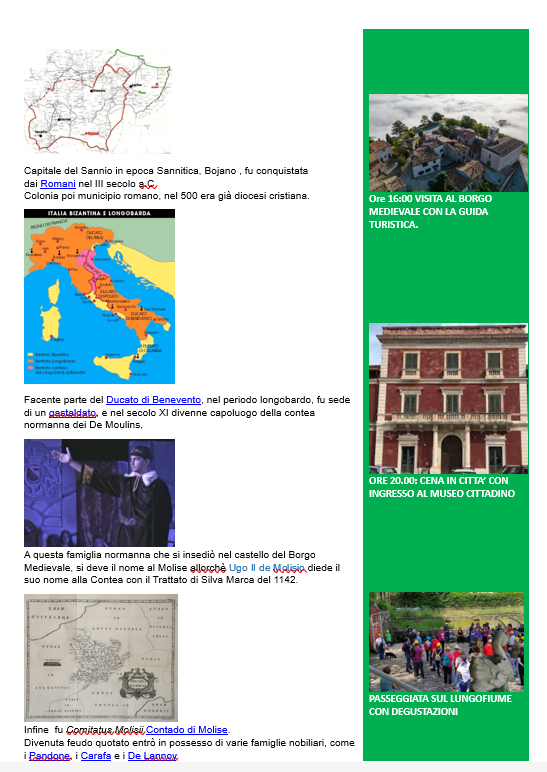
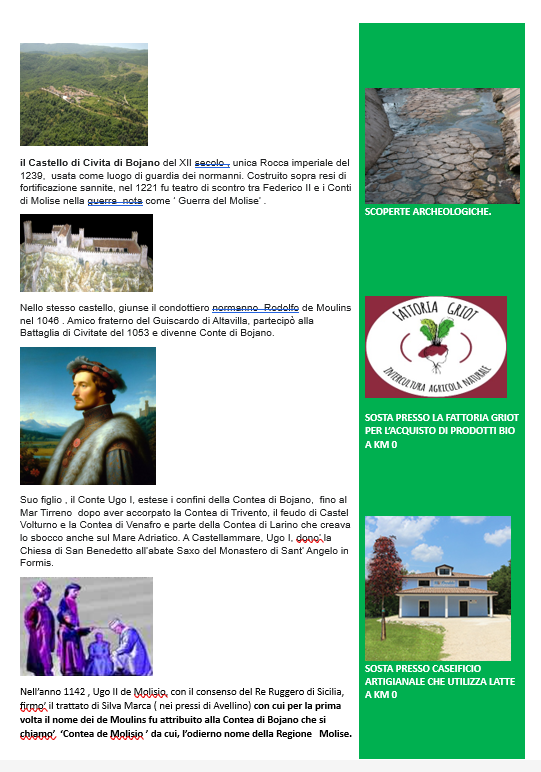
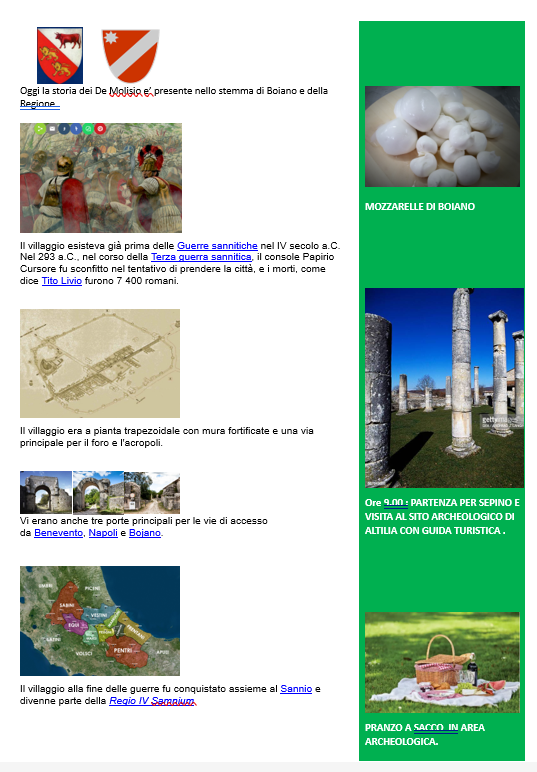
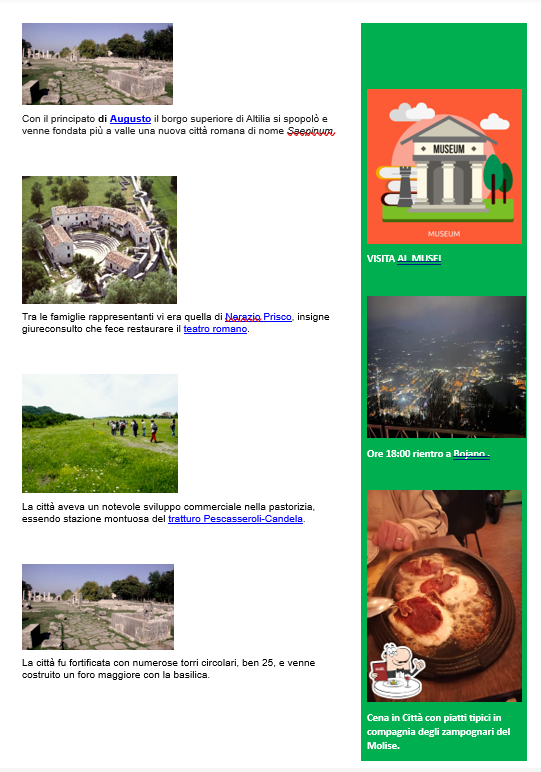
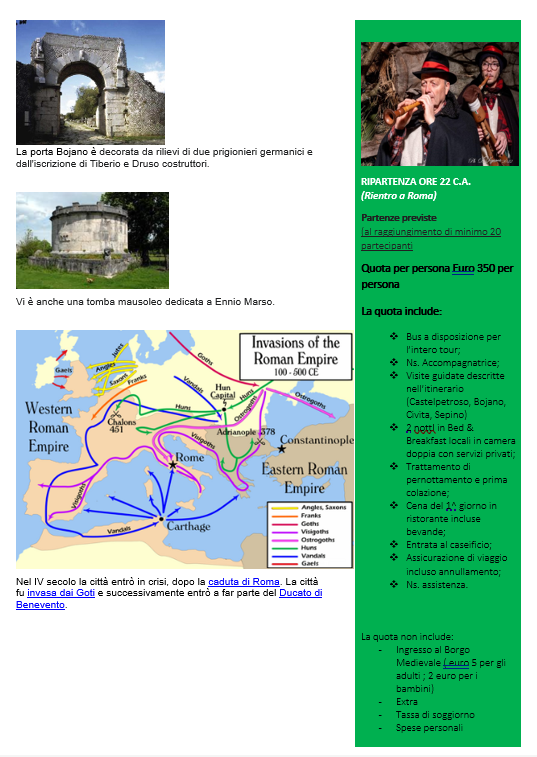

Translation of the text into English
First stop: Castelpetroso.
The municipality is known for some Marian apparitions that occurred in 1888 in the locality of "Cesa tra Santi."
The population also engaged in fundraising for the construction of the sanctuary, which was consecrated in 1975.
The Basilica Sanctuary of Maria Santissima Addolorata is dedicated to the patroness of Molise. According to the testimony of the visionaries, the Virgin Mary appeared for the first time on March 22, 1888, to two shepherd girls named Serafina and Bibiana on the slopes of Mount Patalecchia.
Subsequent apparitions followed this initial event. This phenomenon was later recognized, and the laying of the foundation stone took place on September 28, 1890, with construction completed in 1975.
Viewed from above, the Basilica consists of seven chapels depicting the seven sorrows of the Madonna, with a 54-meter high dome in the center.
The sanctuary and the site of the apparitions are connected by the Via Matris, a 750-meter-long path that recalls the seven Marian sorrows.
Bojano is an Italian municipality with around 9,000 inhabitants in the province of Campobasso, Molise.
It is part of the Union of Municipalities and is globally renowned for the production of famous mozzarellas made with the uncontaminated water of the Biferno Springs, which originates in Bojano.
As the capital of Sannio in Sannitic times, Bojano was conquered by the Romans in the 3rd century B.C. Initially a Roman colony and later a Roman municipality, by the 5th century, it had already become a Christian diocese.
As part of the Duchy of Benevento during the Lombard period, Bojano served as the seat of a gastaldato, and in the 11th century, it became the capital of the Norman county of De Moulins.
To this Norman family that settled in the castle of the Medieval Village, the Molise region owes its name when Ugo II de Molisio gave his name to the County with the Treaty of Silva Marca in 1142.
Finally, it became the Comitatus Molisii (County of Molise). As a quoted fief, it came into the possession of various noble families, such as the Pandone, Carafa, and De Lannoy.
The 12th-century Castle of Civita di Bojano, the only imperial fortress of 1239, served as a guard post for the Normans. Built on the remains of Samnite fortifications, in 1221, it was the scene of a clash between Frederick II and the Counts of Molise in the war known as the 'War of Molise.'
In the same castle, the Norman condottiero Rodolfo de Moulins arrived in 1046. A fraternal friend of Guiscard of Altavilla, he participated in the Battle of Civitate in 1053 and became the Count of Bojano.
His son, Count Ugo I, expanded the borders of the County of Bojano to the Tyrrhenian Sea after incorporating the County of Trivento, the fief of Castel Volturno, the County of Venafro, and part of the County of Larino, creating an outlet to the Adriatic Sea. In Castellammare, Ugo I donated the Church of San Benedetto to Abbot Saxo of the Monastery of Sant'Angelo in Formis.
In the year 1142, Ugo II de Molisio, with the consent of King Roger of Sicily, signed the Treaty of Silva Marca (near Avellino), attributing the name of de Moulins to the County of Bojano for the first time, calling it 'Contea de Molisio,' from which the modern name of the Molise region originated.
Today, the history of the De Molisio is present in the coat of arms of Boiano and the region.
The village existed before the Samnite Wars in the 4th century BC. In 293 BC, during the Third Samnite War, the consul Papirio Cursor was defeated in an attempt to take the city, and, as Livy says, 7,400 Romans died.
The village had a trapezoidal plan with fortified walls and a main street leading to the forum and acropolis.
There were three main gates for access from Benevento, Naples, and Bojano.
At the end of the wars, the village, along with Samnium, was conquered and became part of Regio IV Samnium.
With the principate of Augustus, the upper borough of Altilia depopulated, and a new Roman city named Saepinum was founded downstream.
Among the representative families was that of Neratius Priscus, a distinguished jurist who restored the Roman theater.
The city had significant commercial development in pastoralism, being a mountain station on the Pescasseroli-Candela transhumance route.
The city was fortified with numerous circular towers, 25 in total, and a major forum with a basilica.
The Bojano gate is decorated with reliefs of two Germanic prisoners and the inscription of Tiberius and Drusus, the builders.
There is also a mausoleum dedicated to Ennius Marsus.
In the 4th century, the city entered a crisis after the fall of Rome. It was invaded by the Goths and later became part of the Duchy of Benevento.
In the 9th century, with the Lombard invasions, the Roman city depopulated, and a new fortified city was founded downstream, with a castle and churches.
In the old area of Altilia, shepherds settled and reused the walls of the theater as houses.
In the Medieval period, Sepino was ruled by Roberto de Moulins, Lord of Sepino, who raised Ugo II de Moulins, who in 1142 gave his name to Molise. From Roberto da Sepino, all the dynasties of Campobasso originated.
In the 6th century, a diocese of Sepino was established, dependent on Bojano, but it was immediately suppressed with the Lombard invasions. In the 17th century, the center remained prosperous and developed, as evidenced by the culture of the feudal lords, an example being the Attilio Palace.
In the 1950s, an investigation into the living conditions in southern Italy took place, and exceptional footage was taken in Terravecchia, where shepherds still lived in the perfectly preserved Roman village, crossed by herds of transhumant shepherds in the main street.
In the 1990s, the archaeological site generated regional interest and was restored.
Terravecchia is an archaeological area of Sepino even older than the (better-known) one referring to the Roman era. The walls date back to the 4th century BC.
Sepino: The Historic Center is enclosed in the area of the ancient medieval village. The settlement was surrounded by an almost elliptical city wall, with four gates, equipped with towers dominated by the castle. The castle, heavily damaged by the earthquake of 1805, was gradually demolished.





